A New Adaptive GCC Method and Its Application to Slug Flow Velocity Measurement in Small Channels
Abstract
:1. Introduction
2. New Adaptive Generalized Cross-Correlation (AGCC) Method
2.1. Principles of the AGCC Method
2.2. Digital Implementation of the AGCC Method
- (1)
- To obtain the digital input sequences and by sampling the input signals ( and ) with the A/D converters where is the sampling time interval, is the index of the sequences and is the sampling number, the sampling duration and the sampling frequency can be expressed as:
- (2)
- Then, obtain the spectra of the digital input sequences and by DFT:where is the index of the frequency and is the frequency sequence of the spectra. In practical applications, the fast Fourier transform (FFT) algorithm is adopted to obtain of the spectra;
- (3)
- Design the two adaptive band-stop filters ( and ), i.e., determine the stopband of and .
- (4)
- To obtain the spectra of the filtered signals and :
- (5)
- To obtain the cross-correlation function by IDFT (IFFT):
- (6)
- Find the peak position of to determine the time delay of the two input signals.
2.3. Modification for Practical Measurements
- Step 1.
- Initialize the processed signal spectra , set the iteration number and initialize the periodical center frequency set as an empty set;
- Step 2.
- Calculate the magnitude responses . Then, find the frequency position where the corresponding magnitude is the largest;
- Step 3.
- Judge the periodical intensity according to . When , record and go to Step 4. When , output and go to Step 5;
- Step 4.
- Set the frequency range of and set the iteration number . Then, return to Step 2;
- Step 5.
- Generate the two band-stop filters and :
3. Experimental Results
3.1. Simulation Experiments
3.2. Measurement of Slug Flow Velocity in Small Channels
4. Conclusions
Author Contributions
Funding
Institutional Review Board Statement
Informed Consent Statement
Data Availability Statement
Conflicts of Interest
References
- Beck, M.S. Correlation in Instruments—Cross-Correlation Flowmeters. J. Phys. E Sci. Instrum. 1981, 14, 7–19. [Google Scholar] [CrossRef]
- Beck, M.S.; Plaskowski, A. Cross Correlation Flowmeters—Their Design and Application; Adam Hilger: Bristol, UK, 1987. [Google Scholar]
- Fernandes, C.W.; Bellar, M.D.; Werneck, M.M. Cross-Correlation-Based Optical Flowmeter. IEEE Trans. Instrum. Meas. 2010, 59, 840–846. [Google Scholar] [CrossRef]
- Jung, S.-H.; Kim, J.-S.; Kim, J.-B.; Kwon, T.-Y. Flow-rate measurements of a dual-phase pipe flow by cross-correlation technique of transmitted radiation signals. Appl. Radiat. Isot. 2009, 67, 1254–1258. [Google Scholar] [CrossRef]
- Wang, C.; Zhang, S.; Li, Y.; Jia, L.; Ye, J. Cross-Correlation Sensitivity-Based Electrostatic Direct Velocity Tomography. IEEE Trans. Instrum. Meas. 2020, 69, 8930–8938. [Google Scholar] [CrossRef]
- Bai, L.; Jin, N.; Chen, X.; Zhai, L.; Wei, J.; Ren, Y. A Distributed Conductance Cross-Correlation Method for Measuring Low-Velocity and High Water-Cut Oil-Water Flows. IEEE Sens. J. 2021, 21, 23860–23871. [Google Scholar] [CrossRef]
- Desmond, K.W.; Hunter, G.L. Encoded injection of microbubbles to improve flow velocity measurements using cross-correlation technique. Meas. Sci. Technol. 2021, 32, 085302. [Google Scholar] [CrossRef]
- Freire Figueiredo, M.d.M.; Teixeira Carvalho, F.d.C.; Frattini Fileti, A.M.; Serpa, A.L. Dispersed-phase velocities for gas-liquid vertical slug and dispersed-bubbles flows an ultrasonic cross-correlation. Flow Meas. Instrum. 2021, 79, 101949. [Google Scholar] [CrossRef]
- Tan, Y.; Yue, S.; Cui, Z.; Wang, H. Measurement of Flow Velocity Using Electrical Resistance Tomography and Cross-Correlation Technique. IEEE Sens. J. 2021, 21, 20714–20721. [Google Scholar] [CrossRef]
- Wan, X.; Wu, Z. Sound source localization based on discrimination of cross-correlation functions. Applied Acoustics. 2013, 74, 28–37. [Google Scholar] [CrossRef]
- Manuel Villladangos, J.; Urena, J.; Jesus Garcia, J.; Mazo, M.; Hernandez, A.; Jimenez, A.; Ruiz, D.; De Marziani, C. Measuring Time-of-Flight in an Ultrasonic LPS System Using Generalized Cross-Correlation. Sensors 2011, 11, 10326–10342. [Google Scholar] [CrossRef]
- Padois, T. Acoustic source localization based on the generalized cross-correlation and the generalized mean with few microphones. J. Acoust. Soc. Am. 2018, 143, EL393–EL398. [Google Scholar] [CrossRef] [PubMed] [Green Version]
- Padois, T.; Doutres, O.; Sgard, F.; Berry, A. Optimization of a spherical microphone array geometry for localizing acoustic sources using the generalized cross-correlation technique. Mech. Syst. Signal Process. 2019, 132, 546–559. [Google Scholar] [CrossRef]
- Chu, Z.; Weng, J.; Yang, Y. Determination of propagation model matrix in generalized cross-correlation based inverse model for broadband acoustic source localization. J. Acoust. Soc. Am. 2020, 147, 2098–2109. [Google Scholar] [CrossRef] [PubMed]
- Manuel Vera-Diaz, J.; Pizarro, D.; Macias-Guarasa, J. Acoustic source localization with deep generalized cross correlations. Signal Process. 2021, 187, 108169. [Google Scholar] [CrossRef]
- Hong, S.; Heo, J.; Park, K.S. Signal Quality Index Based on Template Cross-Correlation in Multimodal Biosignal Chair for Smart Healthcare. Sensors 2021, 21, 7564. [Google Scholar] [CrossRef]
- Wang, H.; Li, B.; Lu, Y.; Han, K.; Sheng, H.; Zhou, J.; Qi, Y.; Wang, X.; Huang, Z.; Song, L.; et al. Real-time threshold determination of auditory brainstem responses by cross-correlation analysis. iScience 2021, 24, 103285. [Google Scholar] [CrossRef]
- Kandlikar, S. Heat Transfer and Fluid Flow in Minichannels and Microchannels; Elsevier Press: Oxford, UK, 2005. [Google Scholar]
- Haase, S.; Murzin, D.Y.; Salmi, T. Review on hydrodynamics and mass transfer in minichannel wall reactors with gas–liquid Taylor flow. Chem. Eng. Res. Design 2016, 113, 304–329. [Google Scholar] [CrossRef]
- Ide, H.; Kariyasaki, A.; Fukano, T. Fundamental data on the gas-liquid two-phase flow in minichannels. Int. J. Therm. Sci. 2007, 46, 519–530. [Google Scholar] [CrossRef]
- Abiev, R.S. Bubbles velocity, Taylor circulation rate and mass transfer model for slug flow in milli- and microchannels. Chem. Eng. J. 2013, 227, 66–79. [Google Scholar] [CrossRef]
- Zhang, M.; Pan, L.-M.; He, H.; Yang, X.; Ishii, M. Experimental study of vertical co-current slug flow in terms of flow regime transition in relatively small diameter tubes. Int. J. Multiph. Flow 2018, 108, 140–155. [Google Scholar] [CrossRef]
- Hetsroni, G. Handbook of Multiphase Systems; McGraw-Hill Book, Inc.: New York, NY, USA, 1982. [Google Scholar]
- Knapp, C.H.; Carter, G.C. Generalized correlation method for estimation of time-delay. IEEE Trans. Acoust. Speech Signal Process. 1976, 24, 320–327. [Google Scholar] [CrossRef] [Green Version]
- Azaria, M.; Hertz, D. Time-delay estimation by generalized cross-correlation methods. IEEE Trans. Acoust. Speech Signal Process. 1984, 32, 280–285. [Google Scholar] [CrossRef]
- Roth, P.R. Effective Measurements Using Digital Signal Analysis. IEEE Spectr. 1971, 8, 62–70. [Google Scholar] [CrossRef]
- Carter, G.C.; Nuttall, A.H.; Cable, P. The smoothed coherence transform. Proc. IEEE 1973, 61, 1497–1498. [Google Scholar] [CrossRef]
- Huang, J.; Sheng, B.; Ji, H.; Huang, Z.; Wang, B.; Li, H. A New Contactless Bubble/Slug Velocity Measurement Method of Gas-Liquid Two-Phase Flow in Small Channels. IEEE Trans. Instrum. Meas. 2019, 68, 3253–3267. [Google Scholar] [CrossRef]

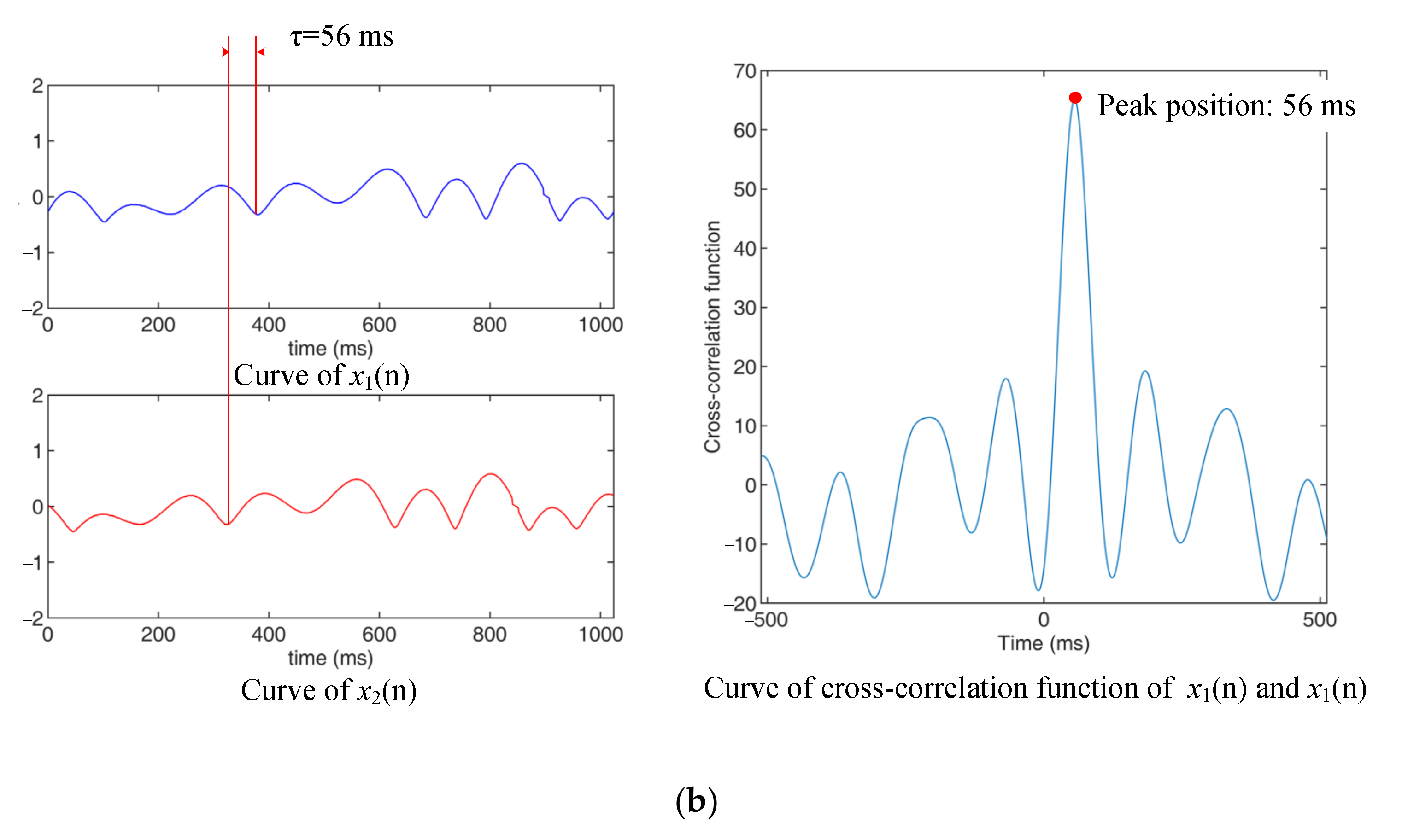


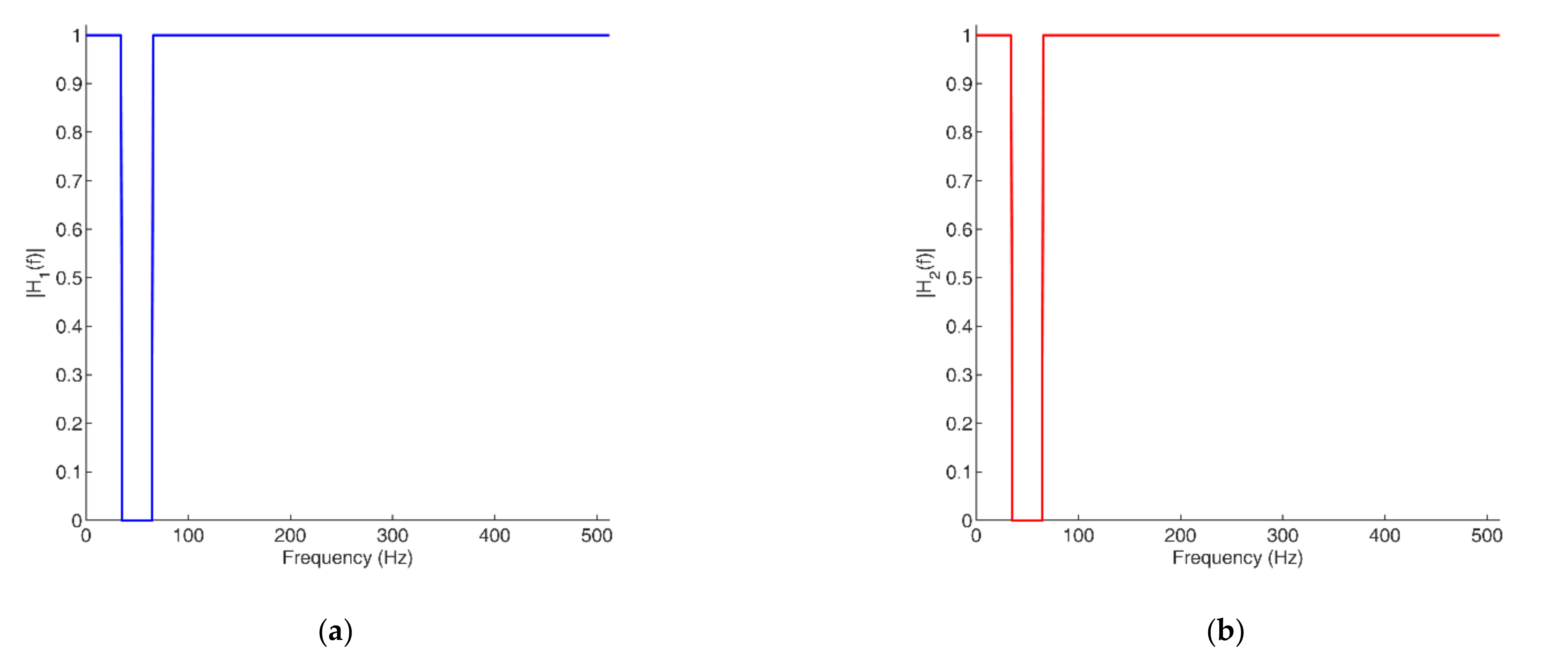
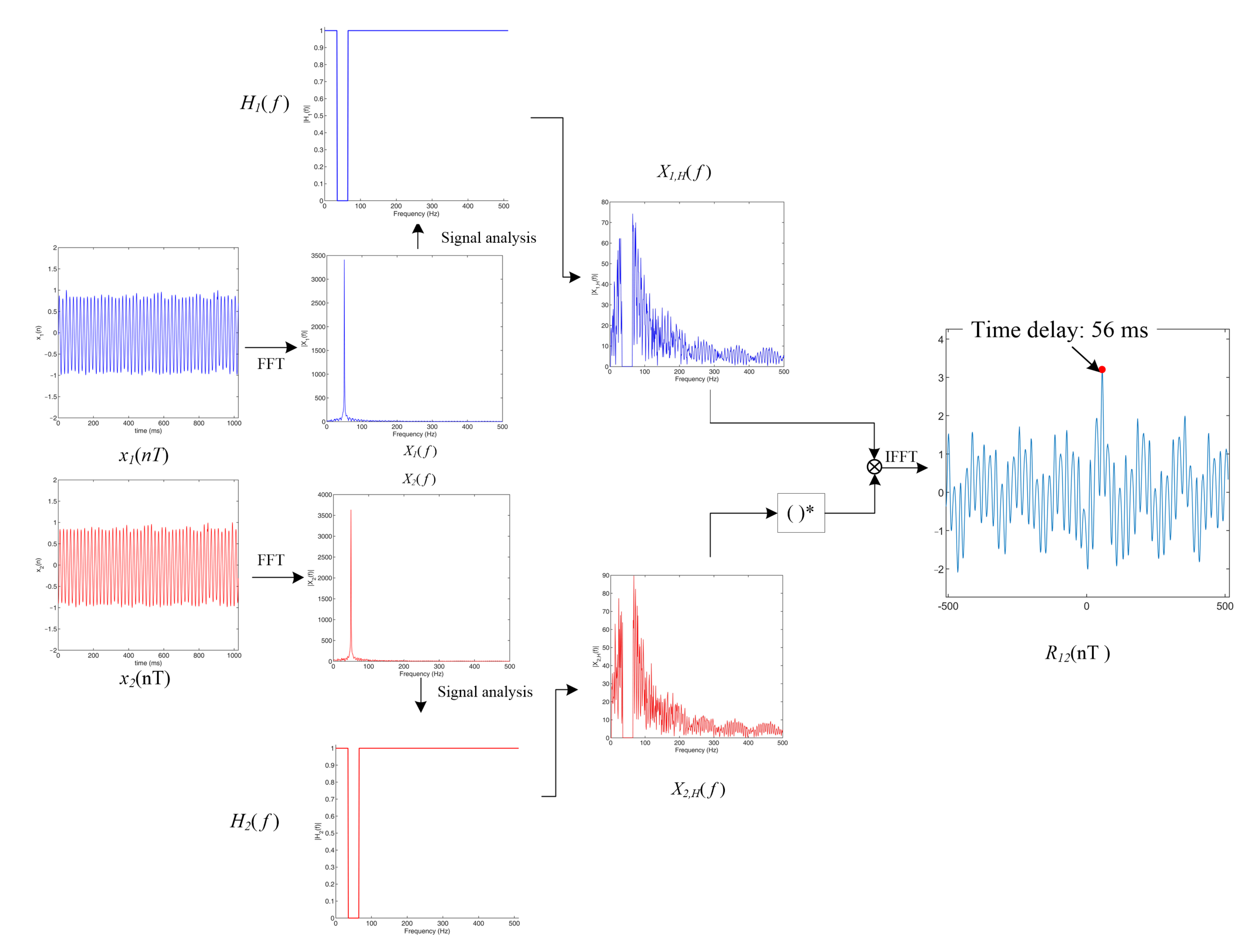

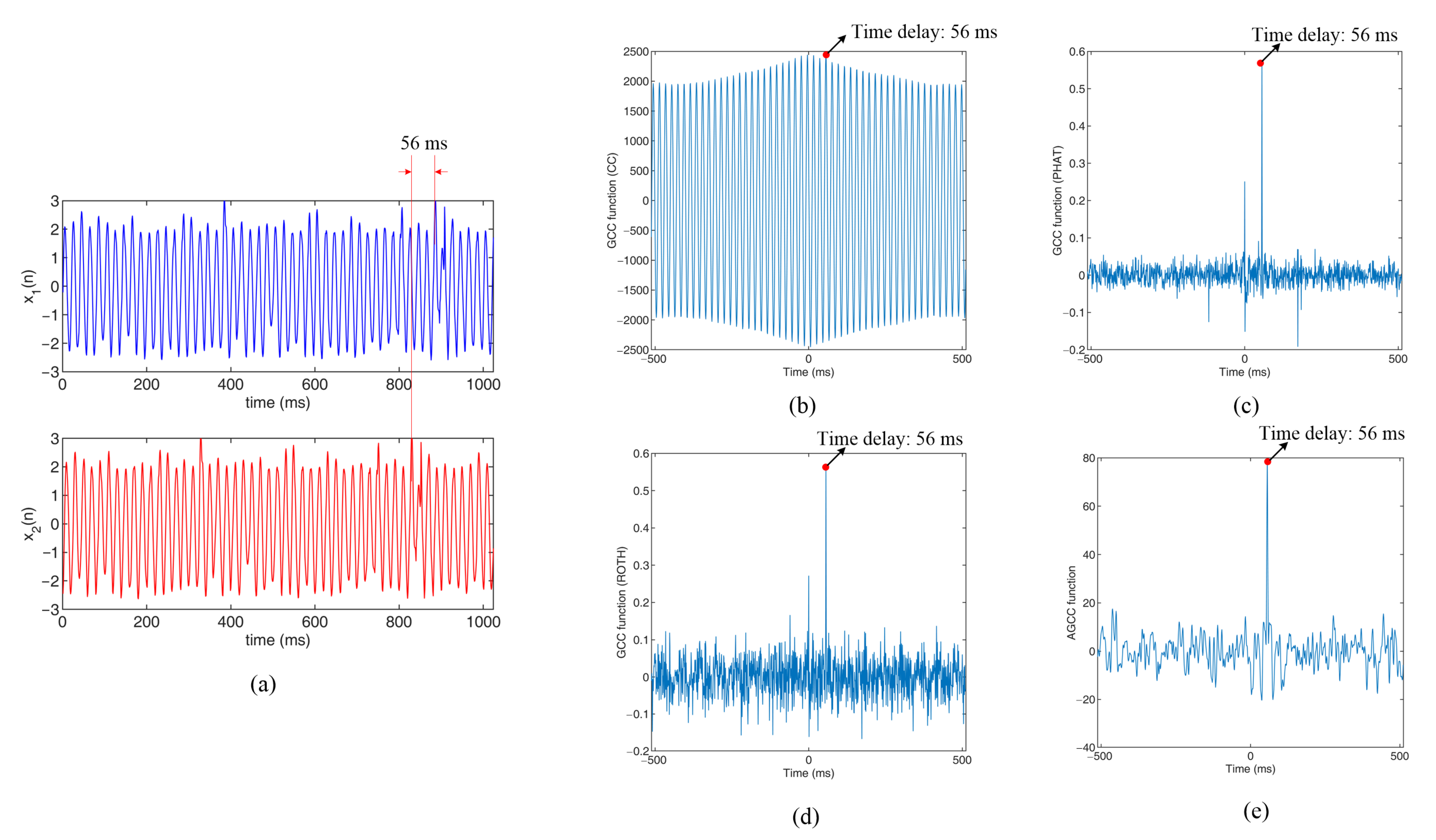
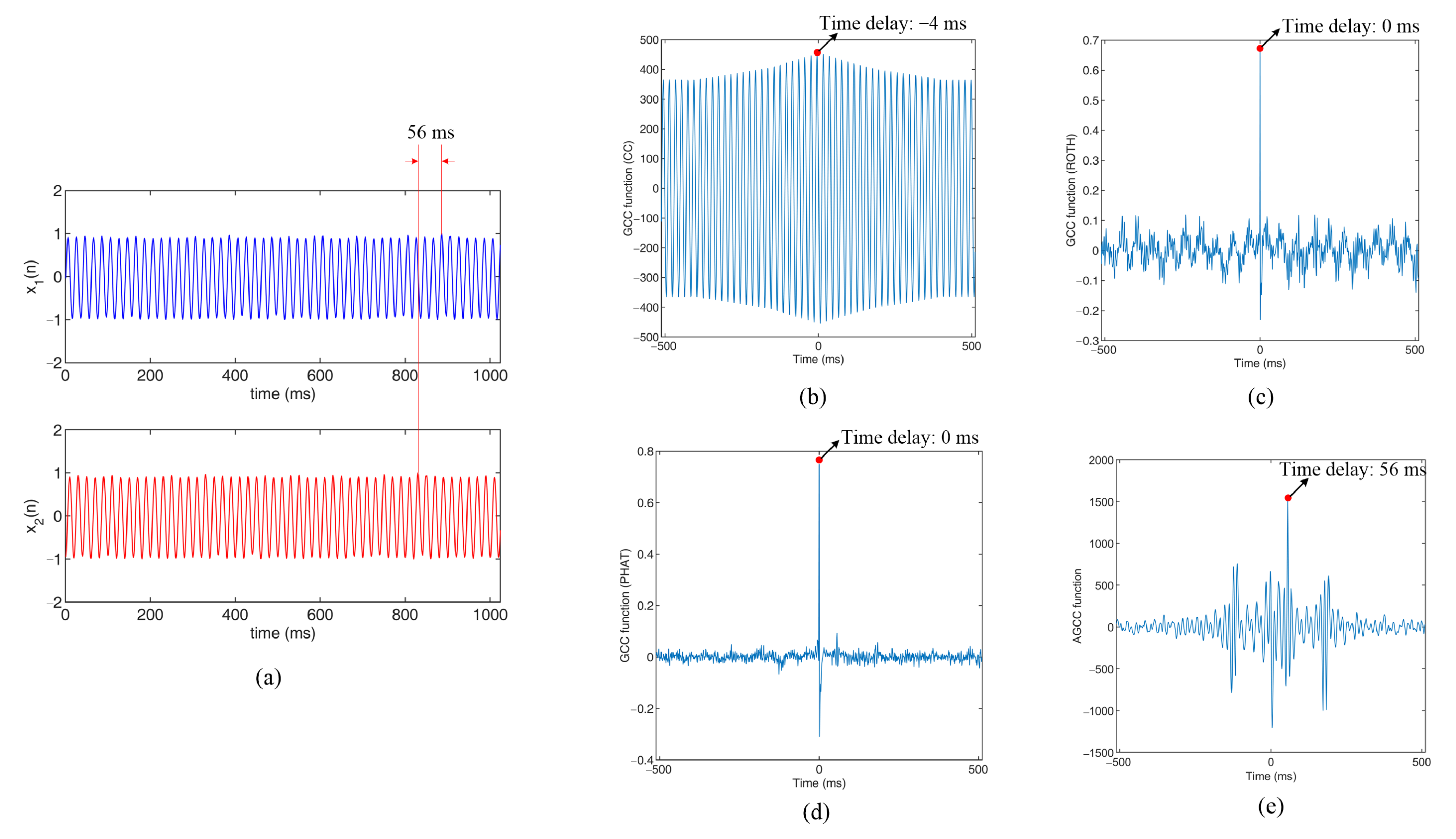
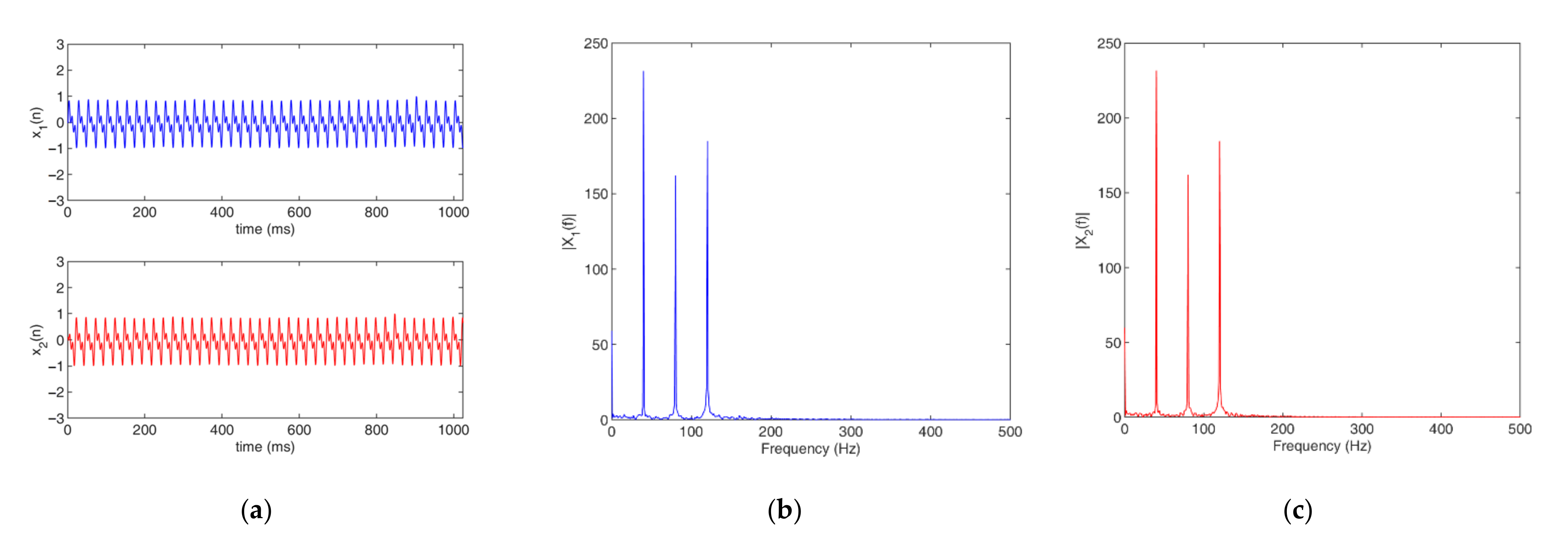
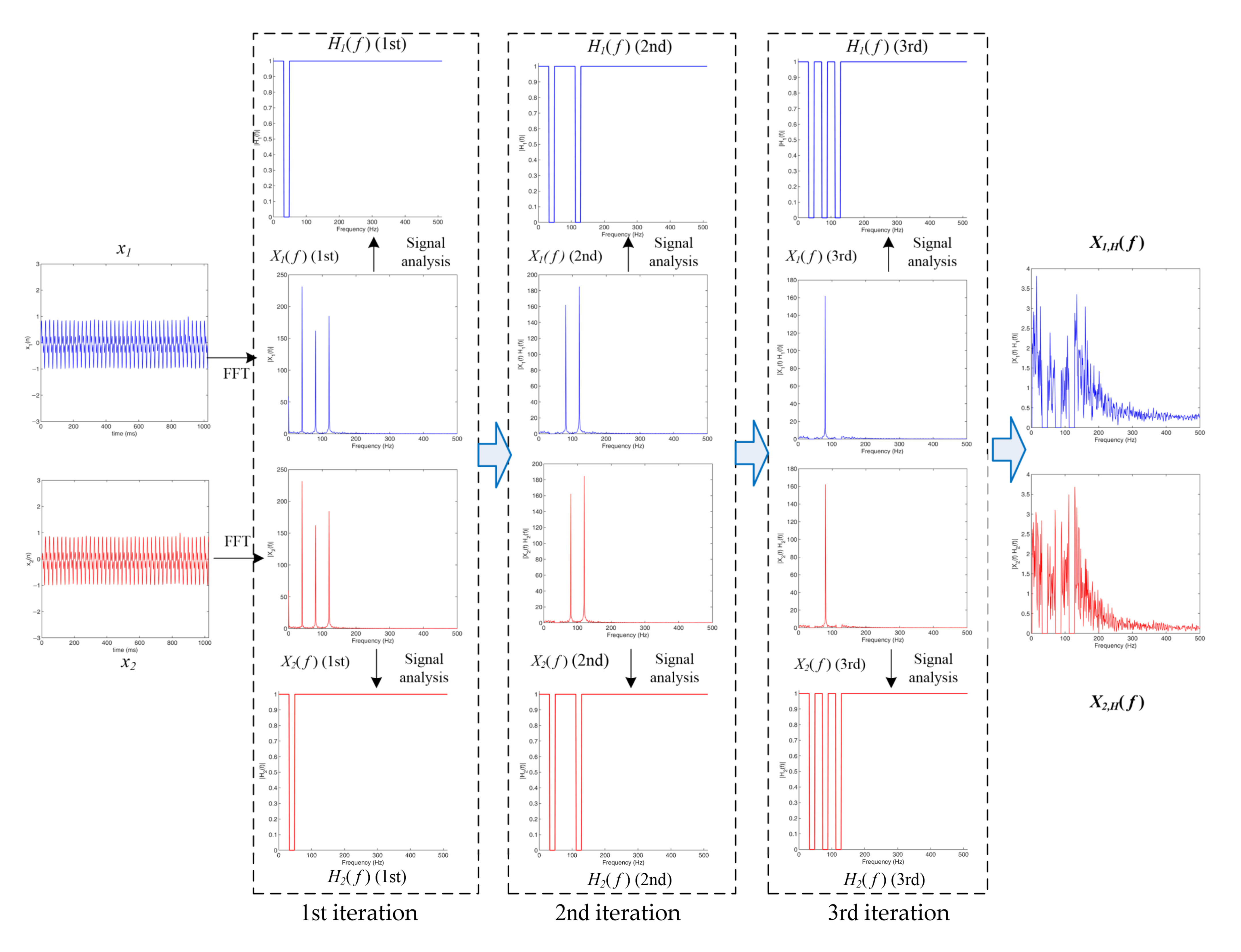
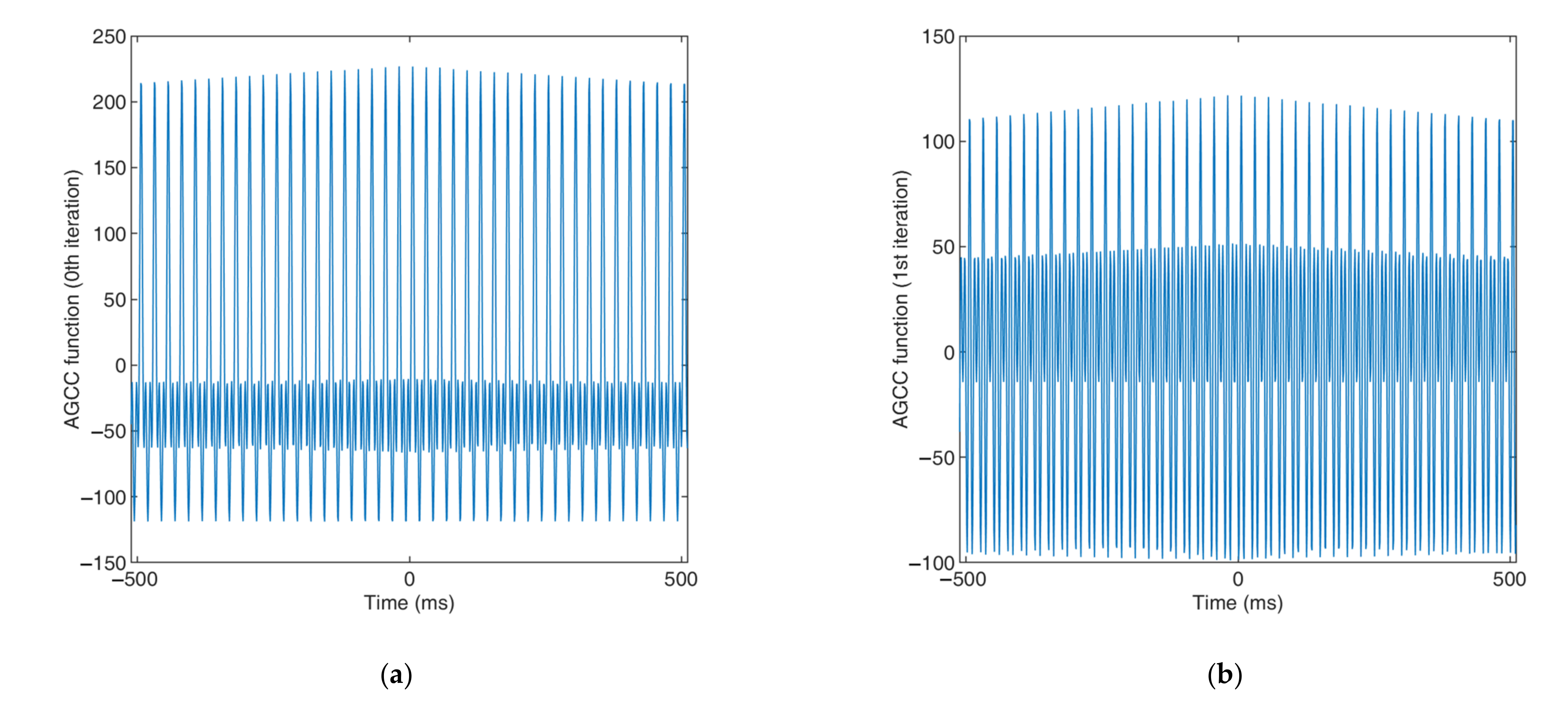
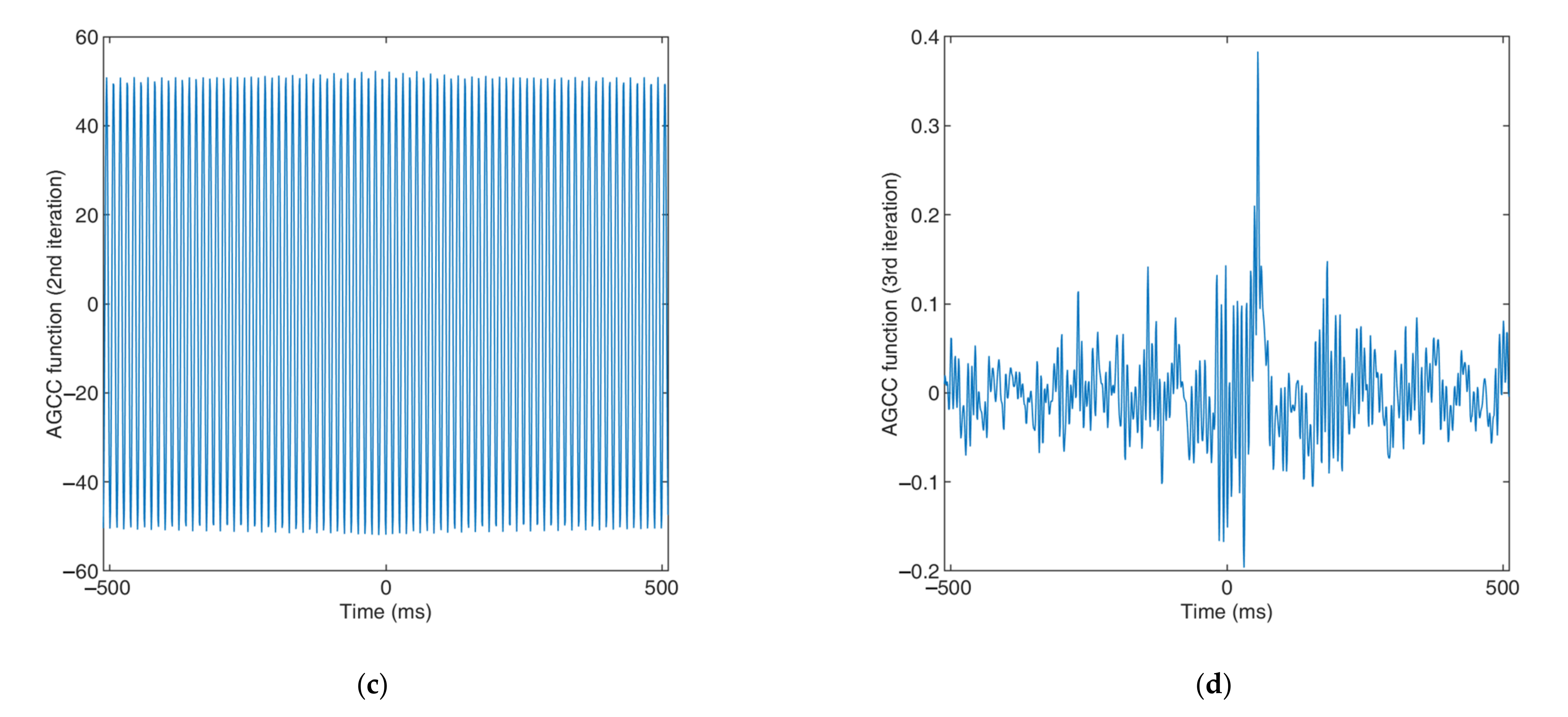

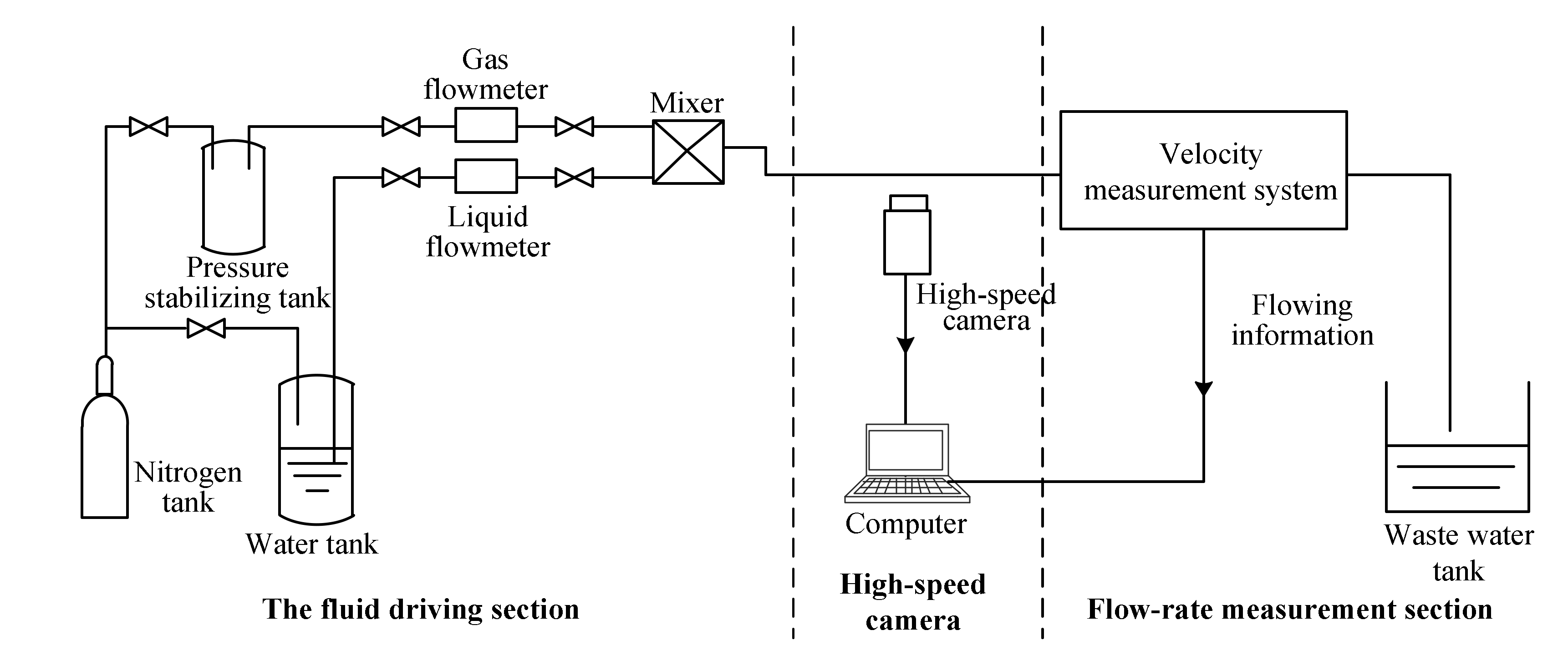
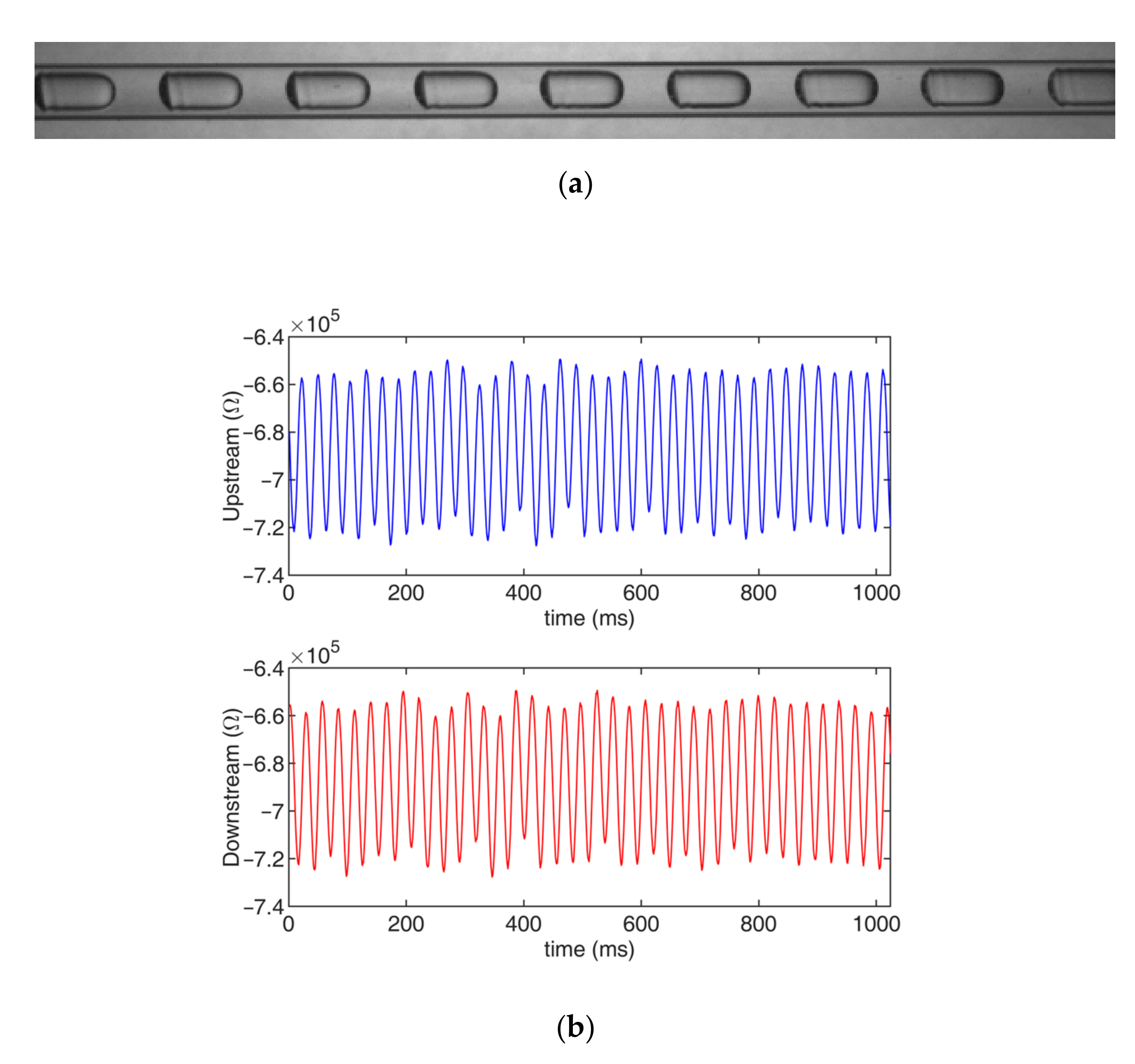
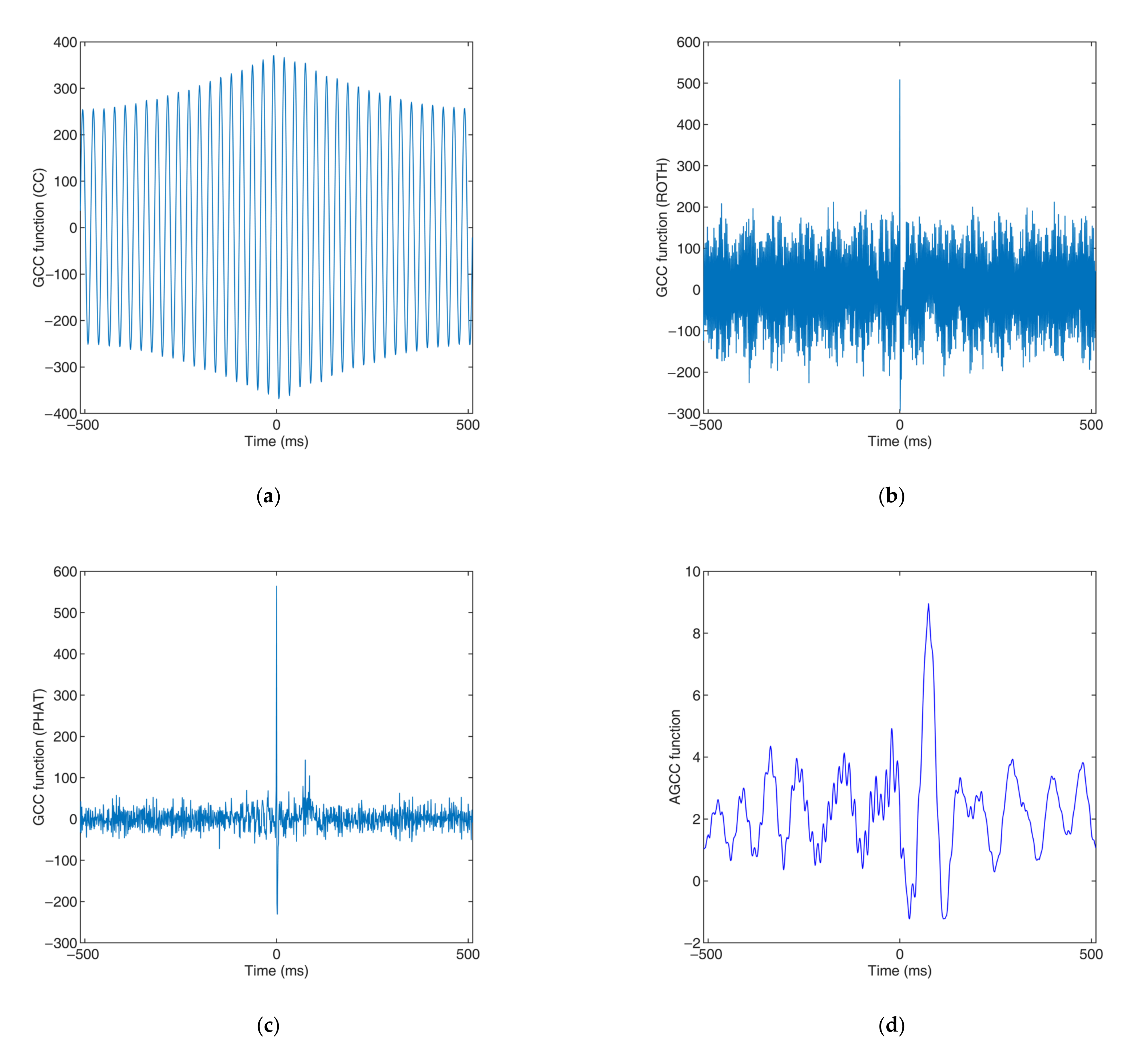
| Reference Time Delay (ms) | Time Delay Estimation Result (ms) | |||||
|---|---|---|---|---|---|---|
| CC | GCC (Roth) | GCC (PHAT) | Proposed AGCC | |||
| 1 | 0.01 | 56 | 56 | 56 | 56 | 56 |
| 10 | 0.9 | 56 | 56 | 56 | 56 | 56 |
| 20 | 3.5 | 56 | 56 | 56 | 56 | 56 |
| 30 | 7.6 | 56 | 56 | 56 | 56 | 56 |
| 40 | 13.5 | 56 | 56 | 56 | 0 | 56 |
| 50 | 21.2 | 56 | −4 | 56 | 0 | 56 |
| 60 | 30.5 | 56 | −4 | 0 | 0 | 56 |
| 70 | 41.5 | 56 | −4 | 0 | 0 | 56 |
| 80 | 51.1 | 56 | −4 | 0 | 0 | 56 |
| 90 | 68.5 | 56 | −4 | 0 | 0 | 56 |
| 100 | 85.6 | 56 | −4 | 0 | 0 | 56 |
| 110 | 102.3 | 56 | −4 | 0 | 0 | 56 |
| 120 | 121.8 | 56 | −4 | 0 | 0 | 56 |
| 130 | 142.0 | 56 | −4 | 0 | 0 | 56 |
| 140 | 165.8 | 56 | −4 | 0 | 0 | 56 |
| 150 | 190.5 | 56 | −4 | 0 | 0 | 56 |
| Inner Diameter (mm) | Velocity Range (m/s) | |
|---|---|---|
| 2.0 | 0.52~1.32 | −3.52~4.31% |
| 2.5 | 0.22~1.15 | −3.91~4.23% |
| 3.0 | 0.52~1.09 | −4.16~3.58% |
Publisher’s Note: MDPI stays neutral with regard to jurisdictional claims in published maps and institutional affiliations. |
© 2022 by the authors. Licensee MDPI, Basel, Switzerland. This article is an open access article distributed under the terms and conditions of the Creative Commons Attribution (CC BY) license (https://creativecommons.org/licenses/by/4.0/).
Share and Cite
Xia, H.; Huang, J.; Ji, H.; Wang, B.; Huang, Z. A New Adaptive GCC Method and Its Application to Slug Flow Velocity Measurement in Small Channels. Sensors 2022, 22, 3160. https://doi.org/10.3390/s22093160
Xia H, Huang J, Ji H, Wang B, Huang Z. A New Adaptive GCC Method and Its Application to Slug Flow Velocity Measurement in Small Channels. Sensors. 2022; 22(9):3160. https://doi.org/10.3390/s22093160
Chicago/Turabian StyleXia, Hua, Junchao Huang, Haifeng Ji, Baoliang Wang, and Zhiyao Huang. 2022. "A New Adaptive GCC Method and Its Application to Slug Flow Velocity Measurement in Small Channels" Sensors 22, no. 9: 3160. https://doi.org/10.3390/s22093160
APA StyleXia, H., Huang, J., Ji, H., Wang, B., & Huang, Z. (2022). A New Adaptive GCC Method and Its Application to Slug Flow Velocity Measurement in Small Channels. Sensors, 22(9), 3160. https://doi.org/10.3390/s22093160






